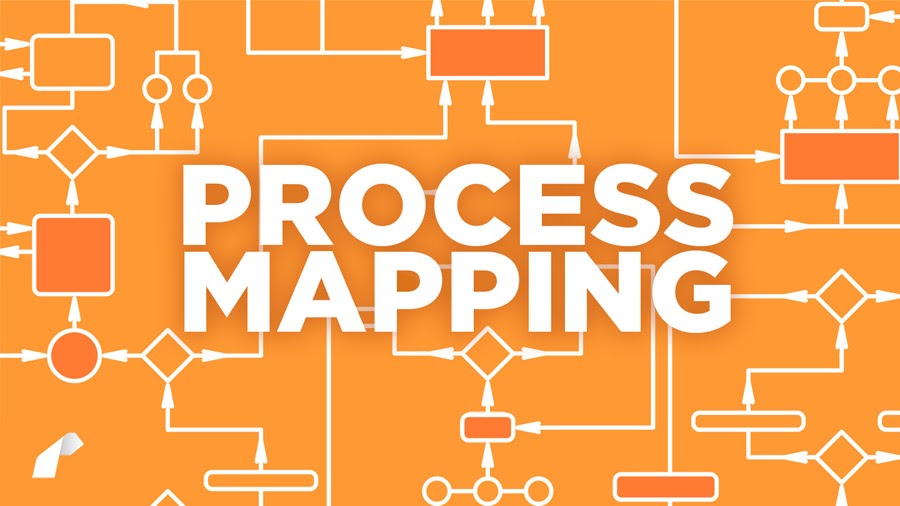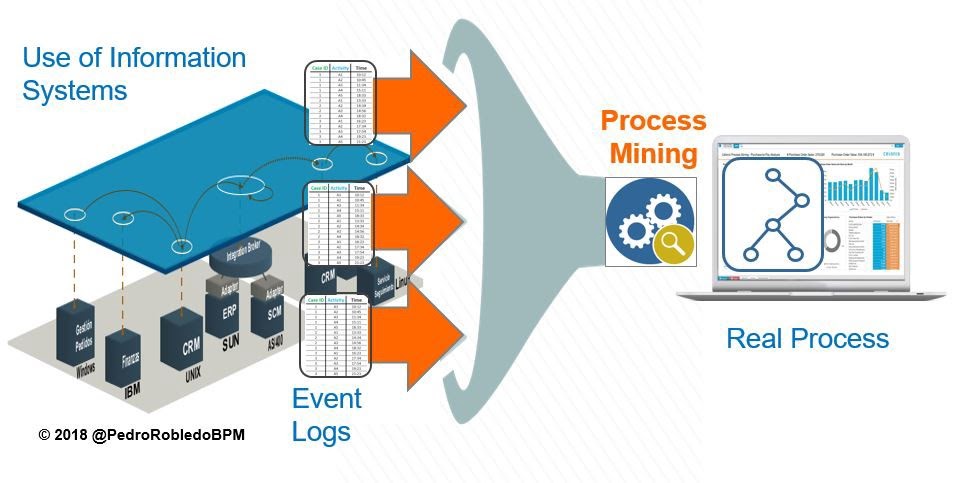The concepts of process mapping and process mining have long been around, especially the first one. They are both practical process-defining and development tools that take the inputs, actions, and outputs of a particular business process to gain objective insights and uncover hidden problems.
However, they are not the same. Process mapping and process mining don’t follow the same fundamentals and principles while improving various business processes within an organization, and they are a lot different from one another.
Read on to learn the differences between both business process improvement tools. First, we will explain everything you should know about process mapping. Afterward, we will help you discover what is process mining, how it works, and how this popular process is an attractive alternative to conventional process mapping.
Process Mapping
What Is Process Mapping?
Process mapping is a tool that eloquently shows the inputs, actions, and outputs of a process in a prominent, step-by-step map of the process. This visual method of planning and visualizing processes identifies data, activities, people, and materials involved in executing a process.
To draw these maps, the process must be investigated and discovered by different methods of data capture. The most common purpose of process mapping is to help team members and other associates to understand it better.
In other words, process mapping is all about the graphical representation within illustrative descriptions of how things get done within a particular business process. It dramatically helps participants to visualize the details of the process closely and guides better decision making.
Each participant can identify the major areas of strengths and weaknesses in the existing process so that individual steps in the process are recognized and improved. Furthermore, process mapping can help reduce the cycle times, defect the process, and enhance its productivity.
The vital components of process mapping include the inputs, outputs, and the individual steps of the process. A decent process mapping should illustrate the work-flow and the interaction within the company.
Besides, it should use standard language or symbols that are easily understood by every participant and should contain accurate detail concerning multiple paths, decisions, and rework loops.
Benefits Of Process Mapping For Businesses
Process mapping for businesses sets out a visual representation for the business’s different processes, analyzing each step within the process, thus providing necessary information to determine better the who, what, why, where, and how viewpoints of the process. Some of the most important reasons why organizations use process mapping include:
- The use of charts, graphs, images, and tables guide better than a lengthy report with a lot of data fixation issues in it;
- Process mapping facilitates numerous improvements in the process since it becomes straightforward to pinpoint the particular areas that need changes in the light of effectiveness and efficiency of the process;
- The alterations made in the process can effortlessly be tracked using process mapping;
- Visual illustrations for training are much more useful than any oral ways of explaining. The visual examples register faster in human brains and help them understand new things more quickly.
Types Of Process Mapping
There are two main types of process mapping: process flowchart and deployment flowchart.
Process Flowchart
A process flowchart is an uncomplicated process map that offers a visual representation of the sequence of activities and their points of decisions. The process flowchart provides the necessary details of the particular process, which can later be expanded by adding different participants’ roles.
Deployment Flowchart
The other type of process mapping offers the interaction between different departments and roles conducted by various participants in the given organization. Deployment flowcharts are commonly referred to as “swim-lane” charts because these process maps come with vertical lines showing the movement of the process from person to person, from department to department.
Process Mining
What Is Process Mining?
In today’s world, business information systems and applications are progressively data-heavy. The constant growth of companies creates a geometrical influx of data coming from different sources. This technological trend has made extracting value from the data a challenging, toilsome, and problematic issue. This is where process mining comes to the rescue.
Process mining may bring to mind similarities and associations with data mining, artificial intelligence, and big data. This is true because process mining is based on specific data types, entry logs, which can map the company’s processes by using particular algorithms.
Process mining is intended to detect, observe, and improve fundamental business processes by “mining” knowledge from entry logs readily available in today’s information systems and applications. Process mining recognizes process inefficiencies by following the digital trail of data through a targeted system. Process mining is substantially faster and more accurate than process mapping through participants’ interviews and flowcharting.
According to a survey conducted with more than 1,000 business process professionals, results have shown that 88% of companies that already use machine learning for process mining have improved by over 250% in their business processes according to their leading key performance indicators. Furthermore, 34% of the business process professionals have stated that they could disclose hidden value and processes in their companies’ data, allowing for better decision-making and offering additional services and products thanks to AI-related algorithms.
In brief, process mining is precisely the methodology designed to unearth hidden problems and their solutions.
Benefits Of Process Mining For Businesses
The process mining technology allows organizations to dive deeper, drill down, and uncover particular inefficiencies within their processes using data, machine learning, and AI algorithms. Process mining provides the necessary data to answer the essential questions about your workflow processes. The vital benefits of process mining for businesses include:
- Process mining technology helps uncover bottlenecks and the potential for automation to reduce overall process costs;
- Embraces data-driven decision making;
- Process standardization;
- Improved performance management;
- Optimizing every single process.
Process Mining Models
Based on the entry logs, process mining can deliver three types of information:
- Discovery. This data-driven approach consists of creating a process map based on entry logs without any outside assumptions or external information about the process model.
- Conformance. Conformance is a reality check method where you check whether your process conforms to reality or the events recorded in the entry log.
- Enhancement. This is a method of gathering information that enriches the standard discovery and conformance process to improve your theoretical process map.
Final Thoughts
If you have a strong vision about your company and its processes, don’t let your technology slow you down. Now that you know the differences between process mapping and process mining review and evaluate what each of them can do for your organization. Don’t hesitate to consult a professional digital transformation company to help you implement the latter and make a measurable impact on your company’s growth.




